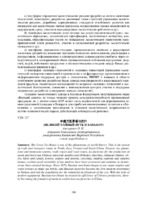| dc.description.abstract | The Great Tea Route is one of the phenomena of world history. This is the system
of trade and transport routes in North, East, Central and South China. Historic tea plantations
and mountain systems, trade routes and road routes, tea factories for the production of
green and brick tea, Chinese ancestral temples and Orthodox churches, religious shrines, rivers,
lakes and canals, forests, steppes and deserts, crossings, trading outposts and customs
houses, architectural ensembles of tea markets have been preserved and continue to demonstrate
their cultural heritage. Since 1874, Russian merchants began to use steam engines and
water presses to make tea bricks, and Russian factories became the first modern enterprises
in Wuhan and laid the foundation for the industrial development of the city. With the help of
modern equipment, Russian merchants increased the efficiency of Chinese production, thereby
becoming the founders of modern world-class tea factories in China. | ru |

